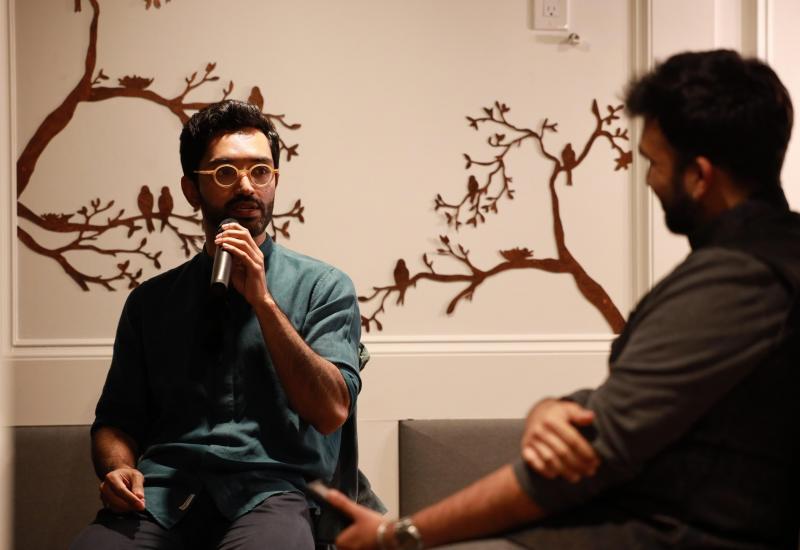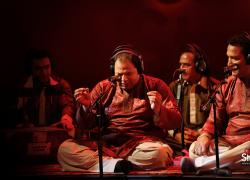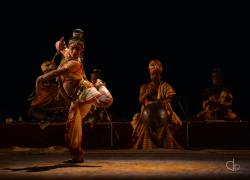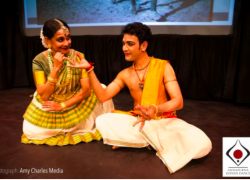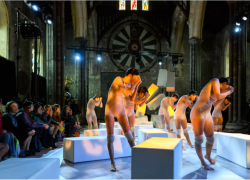Dance and Society: Who is a Hereditary Dancer? – and why I can never answer this question.
Dance and Society
We continue our series specially commissioned with the dance student in mind.
I MUST HAVE BEEN around ten years old when I wrote the following words in my special hardbound notebook, meant exclusively for 'dance class notes': 'Devadasis, literally meaning slaves of god, were women dedicated to temples'. Intrigued, as I heard my dance didi give us this dictation from her fraying book, I asked her what it meant. She mumbled something to the effect of 'Devadasis were married to god, now they don’t do this any more.' And hurriedly moved to the literal meaning of the next word 'Bha Ra Ta Natyam'. [1]
It wasn’t until I picked up Unfinished Gestures in 2013, a book by Davesh Soneji, from my university library, that I revisited this memory again. By now I had become the proud owner of a copy of the Natyashastra and a fake-bronze Nataraja and I believed that these two precious objects summarized the unbroken history of bharatanatyam, which I was told was no less than 2000 years old. Unfinished Gestures confused me the first time I read it. It spoke of women who could be called 'hereditary dancers' who, according to this book (and others that I read later), were foremothers of the dance form I learnt. They were dancing in temples, courts and in people’s homes – as recently as a hundred years ago! For the first time I was able to piece together the history of bharatanatyam with the textbook history of India I studied in school. What was happening to dance when India was fighting for freedom from the British? Or a little before British rule? Why was I never told this history?
I had to teach myself to trust this history – which had dates, citations, field work and, above all, real voices of women recalling their individual and collective lives as performers. Devadasis, ‘slaves of god’, is not what they called themselves, but was a generic name that gained currency only in the 20th century.
Who is a hereditary dancer? The answer to this question cannot be a singular one. A hereditary dancer (known variously as Devadasi, Mahari, Tawaif, Indian Nautch woman) is a spectrum. Though one can loosely say that hereditary dancers are women from matrilineal communities of performers whose profession was branded immoral, and in some cases deemed illegal, by the British as well as by upper caste Indians, this barely scratches the surface of their historical and political struggles. Classical dancers, academics, human right activists and mainstream film makers have attempted to define and redefine her identity over the years but few have accounted for the hereditary dancer’s own perspective of herself.
In December 2018 I received a message from a friend: 'Did you hear about Nrithya Pillai? What happened to her in the December festival in Chennai?' . Without a clue, I googled the name and to my utter surprise and shame discovered for the first time that there is someone who comes from a community whose ancestors were custodians of bharatanatyam. Not only was she dancing but she was vocalising her history, her struggles as a hereditary dancer, in public forums. This time she had spoken up in the very forum where she has experienced unequal treatment and exclusion, only to be further maligned for doing so.
Most Indian classical dance forms that we find in the world today – bharatanatyam, kathak, odissi, vilasini natyam – were practised and performed by women of different hereditary communities who now find it challenging to claim an equal space in the mainstream platforms of classical dance. To give a comprehensive response to the question ‘Who is a hereditary dancer?’ is not my aim here. Rather, it is to raise the question with a confession that perhaps, it is not my place to give an answer.
We will engage further with this history, with hereditary voices, subsequently in the column. Until then we can dwell upon some questions: 'Am I comfortable with others telling my stories without my consent? Who can I trust to tell my story? And why?'
Photo: Tiruvidaimarudur Nagalakshmi, dressed to perform in the Carapentira Pupala Kuravanci in Thanjavur, c. 1940. From Davesh Soneji, Unfinished Gestures. Image 0.1
Note: 1. bha : bhava (feelings, emotions), ra: raga (melody, framework for musical notes), and ta: tala (rhythm)
Further Reading:
1. Saba Dewan,Tawaifnama (Context, 2019)
2. Davesh Soneji, Unfinished Gestures (University of Chicago Press, 2012)
3. Arun Janardhanan, ‘A young dancer takes a hard look at Bharatanatyam’s burden of caste’, Indian Express, 17 February 2020
Readers might find these articles published in Pulse of interest (Issue 125, Summer 2014):
Sanjoy Roy, 'The Dynamics of Displacement: who were the bar girls?'
Gopa Roy, 'Guria: Supporting traditional artists in Northern India'.
If you have thoughts, questions or experiences you would like to share, you are welcome to write to me at sammitha.sreevatsa@gmail.com
Sammitha Sreevathsa is a dance writer and educator based in Bangalore.








